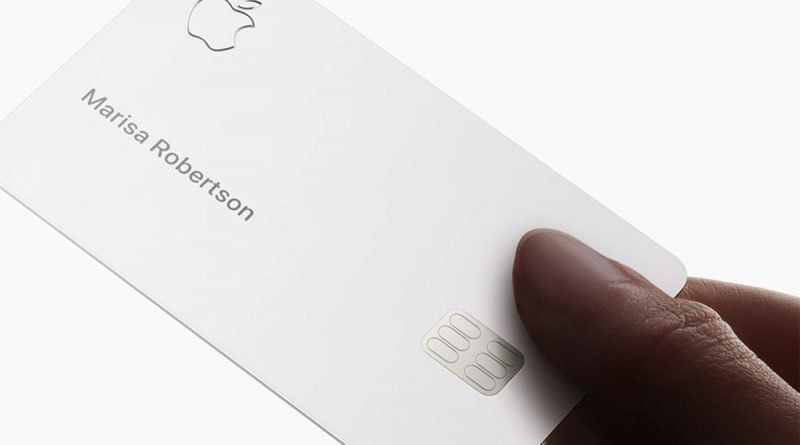What Apple’s approach to building services income tells us
[ad_1]
Spotify’s always done it.
Even Starbucks wants to do it.
Attempts to turn paying customers into subscribers are gathering momentum across every industry. And Apple has successfully transitioned much of its business in this way. So what lessons can we learn from how Apple did what it did?
Apple has built a $86B services business
Apple’s services segment isn’t just News+, Music, TV+, Arcade, Fitness, and iCloud. It also includes AppleCare, App Store, Apple Pay, Apple Card, iTunes Store and a range of lesser-known manifestations, probably including cash the company gets paid to make Google’s search engine default across its product range.
The services element of Apple’s business has tripled in the last six years and now brings in about $86 billion in revenue, the company said during its most recent fiscal call.
That’s more than $7 billion a month in predictable earnings.
Apple CEO Tim Cook has said the company now has 745 million paid subscribers across it services, including in-app subscriptions. “That’s up 160 million year on year, which is up five times in five years,” he said.
Apple’s growth apes the trend. Zuora’s Subscription Economy Index shows subscription businesses have grown six times faster than the S&P 500 over the last nine years.
Services are not new
From cars to real estate rentals and magazine subscriptions, people have always been willing to pay for access to what they need.
The evolution of the internet and technology that uses it has expanded the reach of the idea into every industry, so long as a company can identify or repurpose an asset to make it available in this way.
Apple seems dedicated to identifying and introducing new service-based businesses — Apple Business Essentials, for example. Another is continued speculation the company may enter the Buy Now, Pay Later (BNPL) market.
Through a third-party partner, Apple recently introduced what could be another NBT (Next Big Thing) in the form of equipment leasing for business users. Like the iPhone Upgrade Program, the scheme hints at a future in which Apple offers its hardware as a service, in exchange for a monthly fee.
That’s good for consumers who may be able to access solutions they may not otherwise be able to easily afford, but also holds significant advantage for business users.
Enterprises like services, too
The enterprise markets are migrating quite rapidly toward “As-a-Service” models for everything from networking to hardware to business services and storage within third-party clouds.
Enterprises small and large like the ability to rapidly scale deployments in response to business needs unlocked by these models. They also like that costs become far more predictable. McKinsey once claimed 82% of businesses prefer to subscribe for software than to purchase a perpetual license.
Don’t ignore that Apple does now offer a service for business users with Apple Business Essentials, as this may become more important over time.
Starbucks’ attempt to create a coffee subscription tier reflects this trend just as much as every tech blogger quietly asking for support (NB: Even this author is trying this).
On a far less mundane level, mobile networks figuring out how to separate network technologies from the hardware that runs them also reflects this shift, prompting the introduction of key services such as unified communications, SD-WAN or network endpoint security solutions for a monthly fee. This transition to subscription-based access rather than ownership is taking place across every industry.
How does business make this transition?
So, how does your business pivot into subscription-based income? Every business is different, but I think bravery makes for a good starting point.
One thing Starbucks and Apple have in common in their approach to crafting services to attract subs revenue is that in both cases they have taken an existing business and been brave enough to perhaps cannibalize it.
Apple owned the world’s biggest music store before it launched its music streaming service, while Starbucks already makes lots of lovely lolly hustling latte. Both needed a certain fortitude to risk mutating their existing profitable concerns into new business models.
Lateral thinking also helps. AppleCare shows that many users will pay a regular fee in exchange for servicing and maintaining equipment. It is possible other businesses, including smaller businesses, may already offer support packages that could become services.
Flexibility is one of the greater benefits of subscription.
You should be able to subscribe, unsubscribe, scale up and scale down what you pay for at will. “We recommend that businesses design their offerings for ultimate consumer flexibility and freedom, so that customers can tap into them anytime, anywhere, to whatever extent that they choose,” says Zuora chair Amy Konary.
But at heart, business is still about relationships
Relationships matter.
Apple’s Mac, iPhone, and iPad customers are happy customers displaying customer satisfaction scores above 90 points. This happy band of Apple acolytes has already proved willing to invest in new Apple services as they appear; keeping them is the challenge.
The transactional flexibility services provide means unhappy customers churn swiftly.
Good experiences help create strong customer loyalty, which itself turns into better acceptance of your mistakes and more interest in future services from your firm. You also gather more customer data, which can inform future product development.
There are risks
Are there risks? Of course. For example, during the transition to subscription revenue may dip below operating expenses for a while as the service builds.
At the same time, you must be confident you are offering a service that genuinely provides subscriber value. A focus on customer need (in Apple’s case as evidenced in customer satisfaction) is vital to underpin that transition.
This must also be reflected in the culture of your business. (That’s important. A CFO Research/Salesforce survey showed two-thirds of companies attempting to build subscription business faced operational challenges within their own internal culture.)
Apple recognizes customer communications as fundamental to its success — but also knows it must offer products and services its customers genuinely need.
Marketing always works best when applied the Apple retail way, which is to deliver solutions customers genuinely need, rather than forcing them to adapt.
That approach helped Apple retail stores become some of the most profitable on the planet. It is also rooted at the core of the company’s culture. Apple’s famed Human Interface Guidelines have always aimed to put the user at the center of the experience.
To take people with you, you must meet them where they are.
Please follow me on Twitter, or join me in the AppleHolic’s bar & grill and Apple Discussions groups on MeWe.
Copyright © 2021 IDG Communications, Inc.
[ad_2]
Source link




